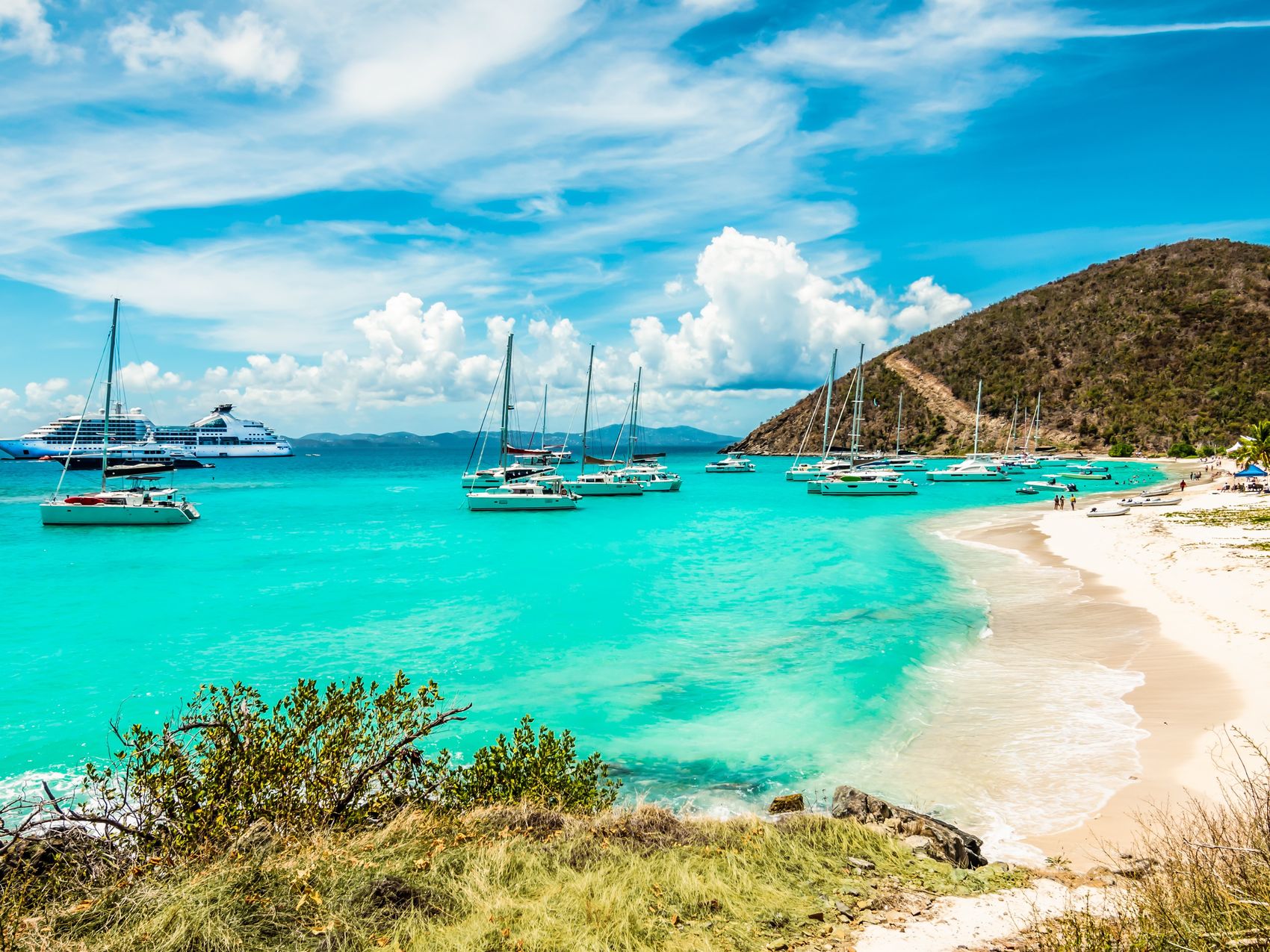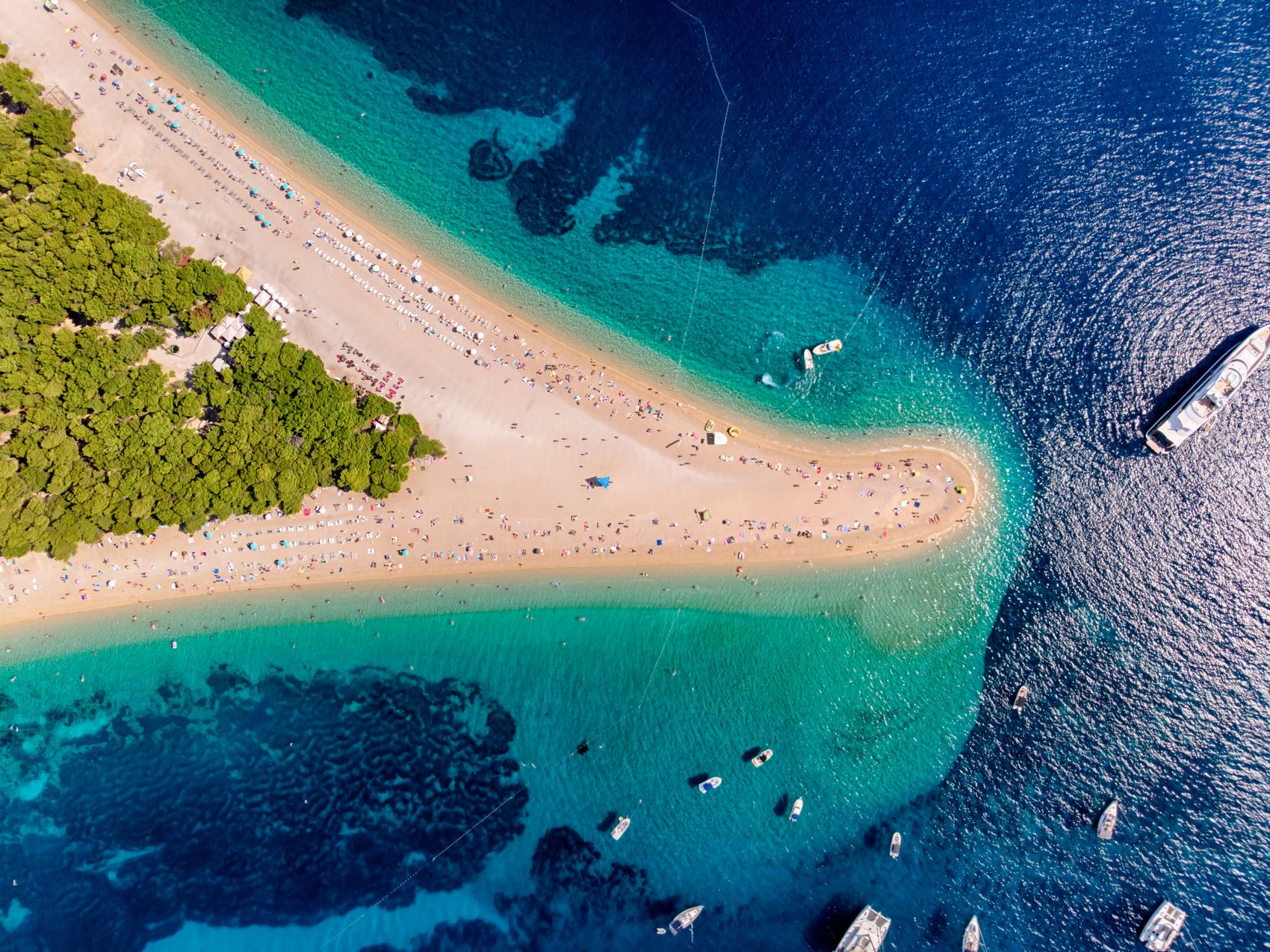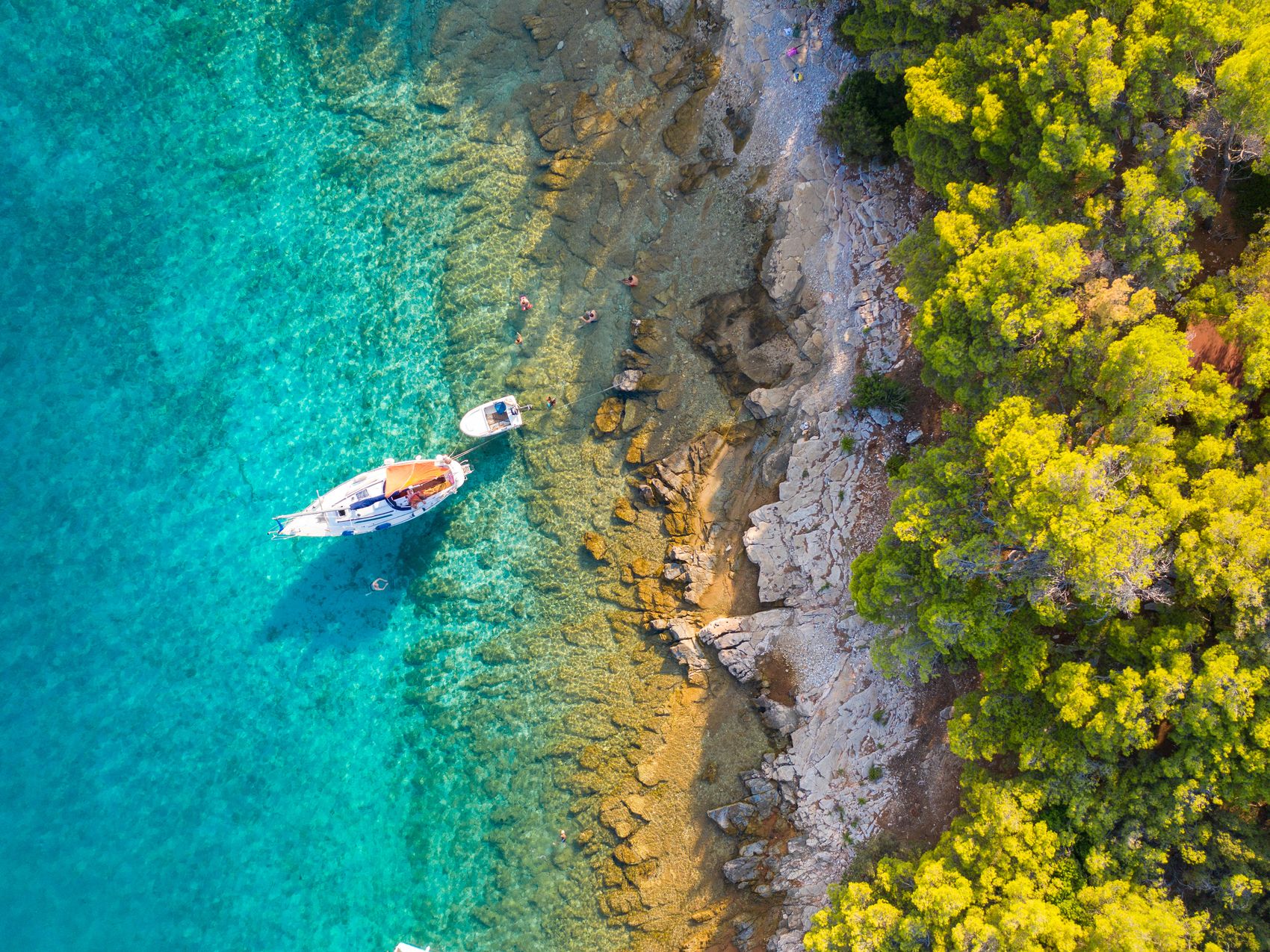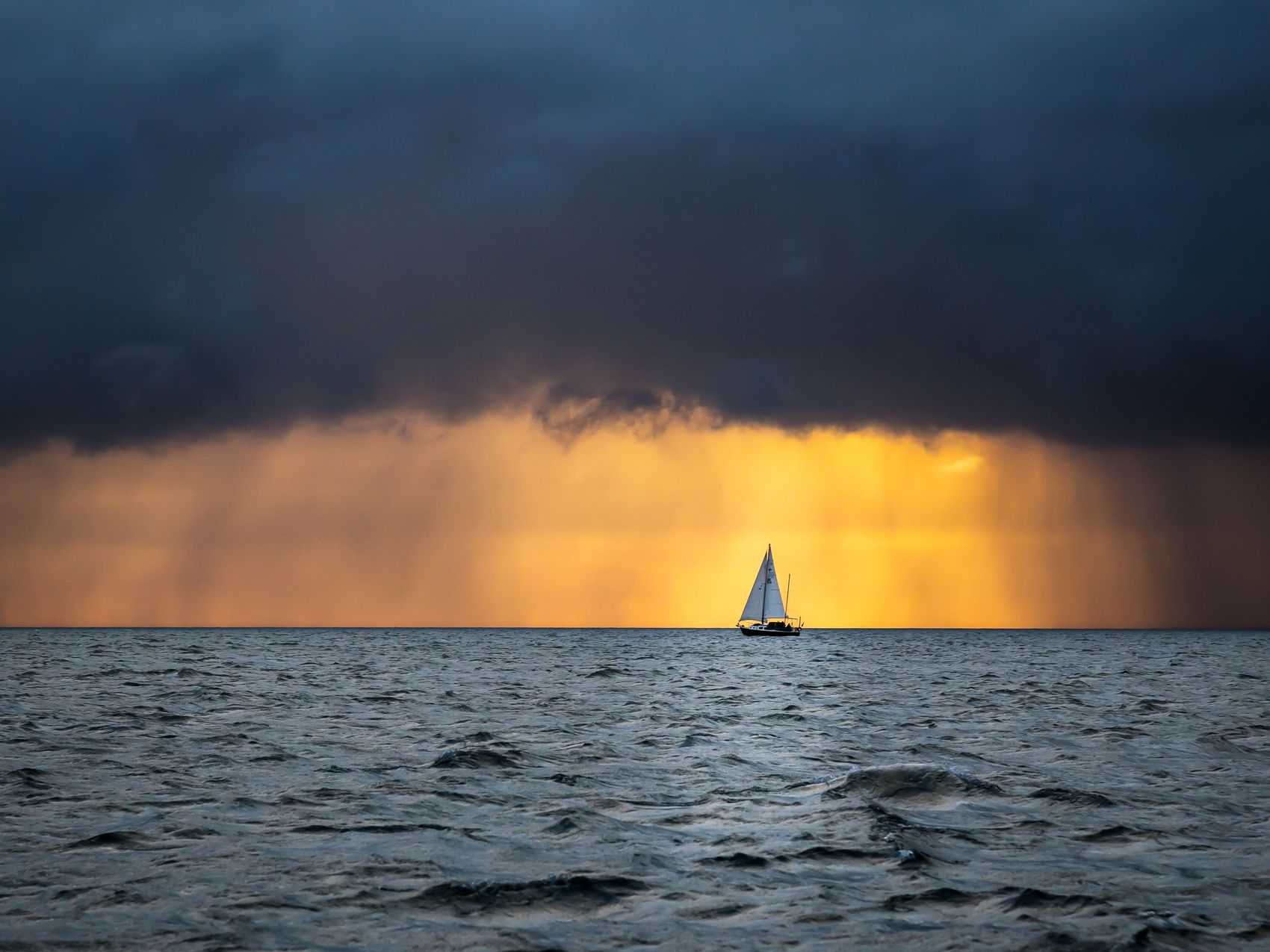Once you head off on a Caribbean adventure, you’ll keep coming back. The Caribbean offers everything that makes sailing exceptional. A variety of routes, constant wind, endless beaches with white, black and even pink sand, a rich underwater world and delicious gastronomy. The Caribbean encompasses hundreds of wonderful and unusual places.
If you are looking for the best tips for sailing in the Caribbean, you are in the right place. Keep reading as we cover the following:
- Why sail in the Caribbean?
- When is the best sailing season in the Caribbean?
- What are the sailing conditions here?
- What is maritime infrastructure like?
- How much does sailing in the Caribbean cost?
- The best sailing destinations
- Recommended routes in the Caribbean
Why sail in the Caribbean?
The Caribbean consists of over 700 islands. The uniqueness of the Caribbean islands lies in the fact that each island has its unique characteristics. It’s a vast area that will never get you bored.
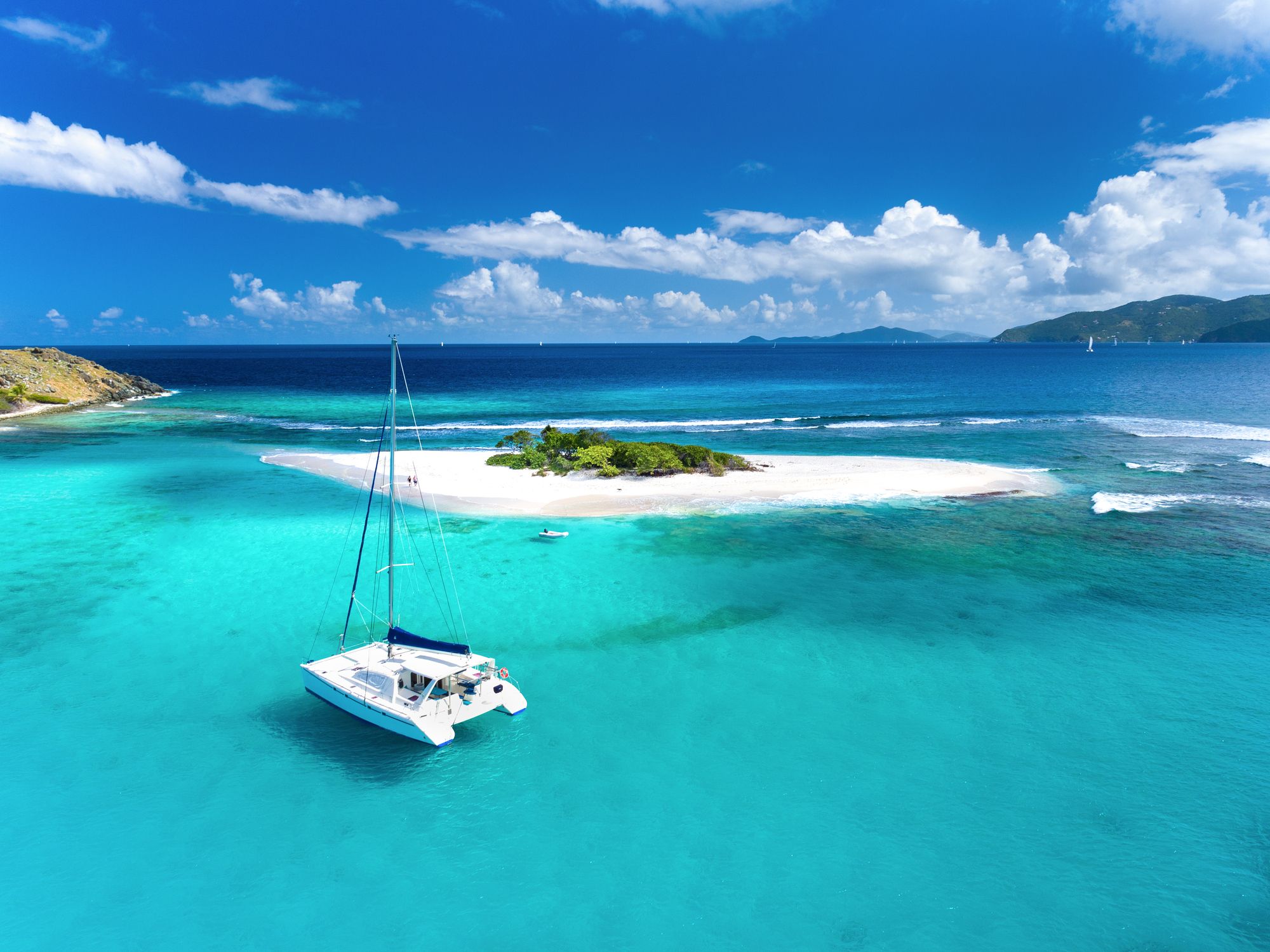
Based on the popularity among sailors, the Caribbean is seen as a group of islands from the Bahamas archipelago (including the Turks and Caicos Islands) to a chain of Antillean islands arranged in a row from north to south. The most famous are the British Virgin Islands, Antigua and Barbuda, Saint Martin, Guadeloupe, Dominica, Martinique, Saint Lucia, Saint Vincent and the Grenadines and Grenada. From a geographical point of view, the Caribbean islands include large islands with countries such as Cuba, the Dominican Republic, Haiti and Puerto Rico and the smaller Dutch islands above South America (the so-called ABC islands - Aruba, Bonaire, Curacao) and Trinidad and Tobago.
Depending on the mood, time and level of sailing skills, you can sail abundantly in the trade winds around the windward islands (e.g. Grenada, Martinique, St. Lucia, Barbados) or enjoy the calmer sea around the leeward islands (e.g. British Virgin Islands, Guadeloupe, St. Martin, Dominica).
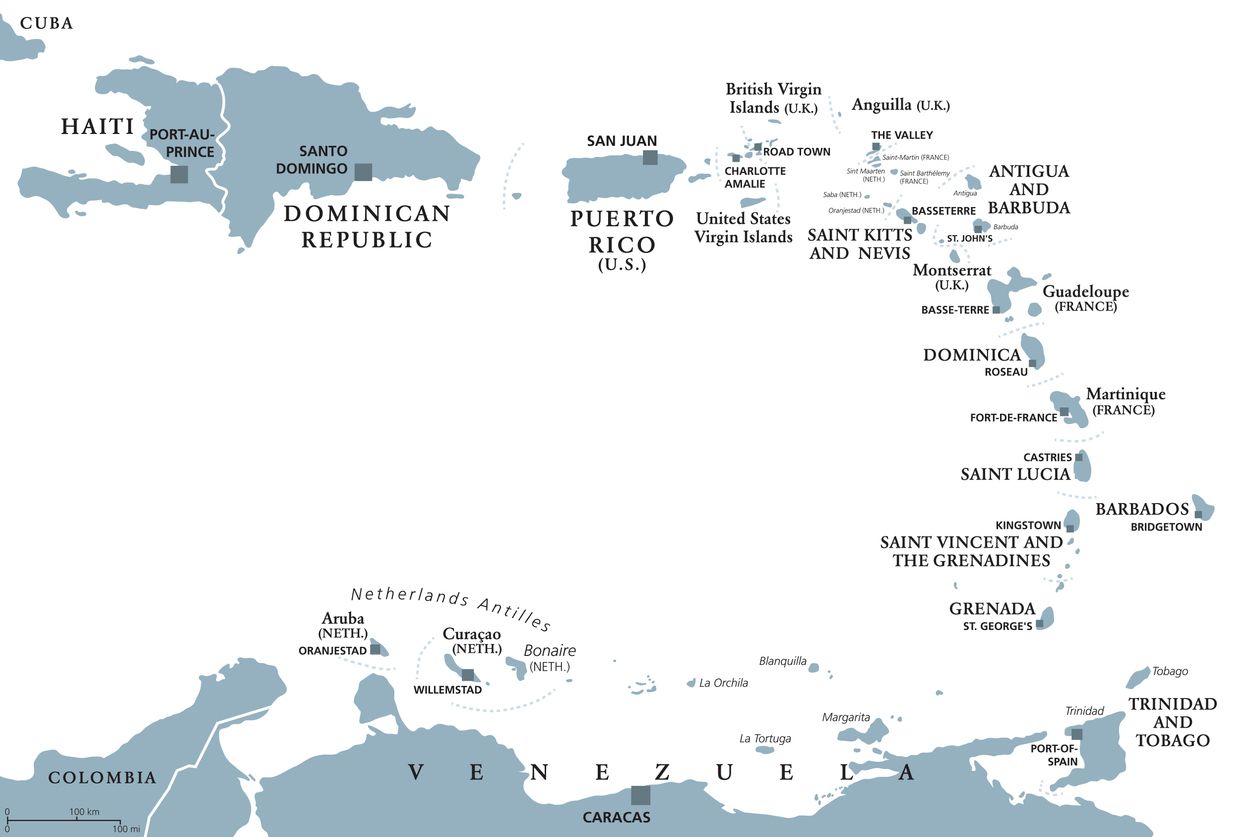
The Caribbean will be significantly appreciated by:
- Recreational sailors who prefer a calmer wind and small waves will find their piece of paradise on islands such as the British Virgin Islands, Barbuda and Antigua.
- Sporty sailors will have plenty of fun around the windward islands. There are long and challenging passages to sail against the wind (e.g. the 120 nautical mile stretch from Martinique to Barbados or a route from Martinique to Guadeloupe).
- Divers and coral reef seekers will rejoice in the underwater scenery of the Grenadines and Grenada archipelago.
- Lovers of dance, flowers, rum and rich fauna and flora will stay cheerful anywhere in the Caribbean
When is the best sailing season in the Caribbean?
The sailing season is from December to May, with the peak from February to May. June to October follows the period with the most significant probability of storms and destructive hurricanes.
Most sailors leaving from Europe opt for Martinique as this French territory is easily accessible by air. Another popular starting point is the British Virgin Islands. A few brave people “conquer” the Caribbean with the popular transatlantic cruise from the Canary Islands.
What are the sailing conditions?
During the sailing season in the Caribbean, the northeast (NE) trade winds blow. They have a constant direction, and you will not be caught by a sudden change in the wind. In the northern part of the Caribbean, on the Atlantic side of the Antilles, you will feel the influence of the Antilles Current (NW direction), which merges with the strong Gulf Stream above the Bahamas.
Many shallows or underwater coral reefs may catch you off guard. That’s why the guidebooks emphasise observing the situation from the bow with your own eyes. Not all shallows and obstructions are marked on maps or in applications.
The most suitable type of vessel in Caribbean waters is undoubtedly a catamaran due to its low draft and greater comfort in the tropical heat. The Caribbean Sea is considered one of the warmest in the world.
Night sailing trips between smaller Caribbean islands are not recommended. The visibility of shallows and coral reefs is practically zero at night.
When sailing between islands with different countries, you must take into account customs formalities and steer the boat to the “port of entry” of the country in question, where you must register. This procedure can take from just a few minutes to half a day. You have to think about it when planning your route. Also, don’t get surprised by random and frequent Coast Guard inspections.
What is maritime infrastructure like?
The Caribbean region has a large number of well-protected marinas and bays. In the peak season, plan your arrival at the anchorage as early as possible.
You can find nice and sheltered anchorages on every Caribbean island.
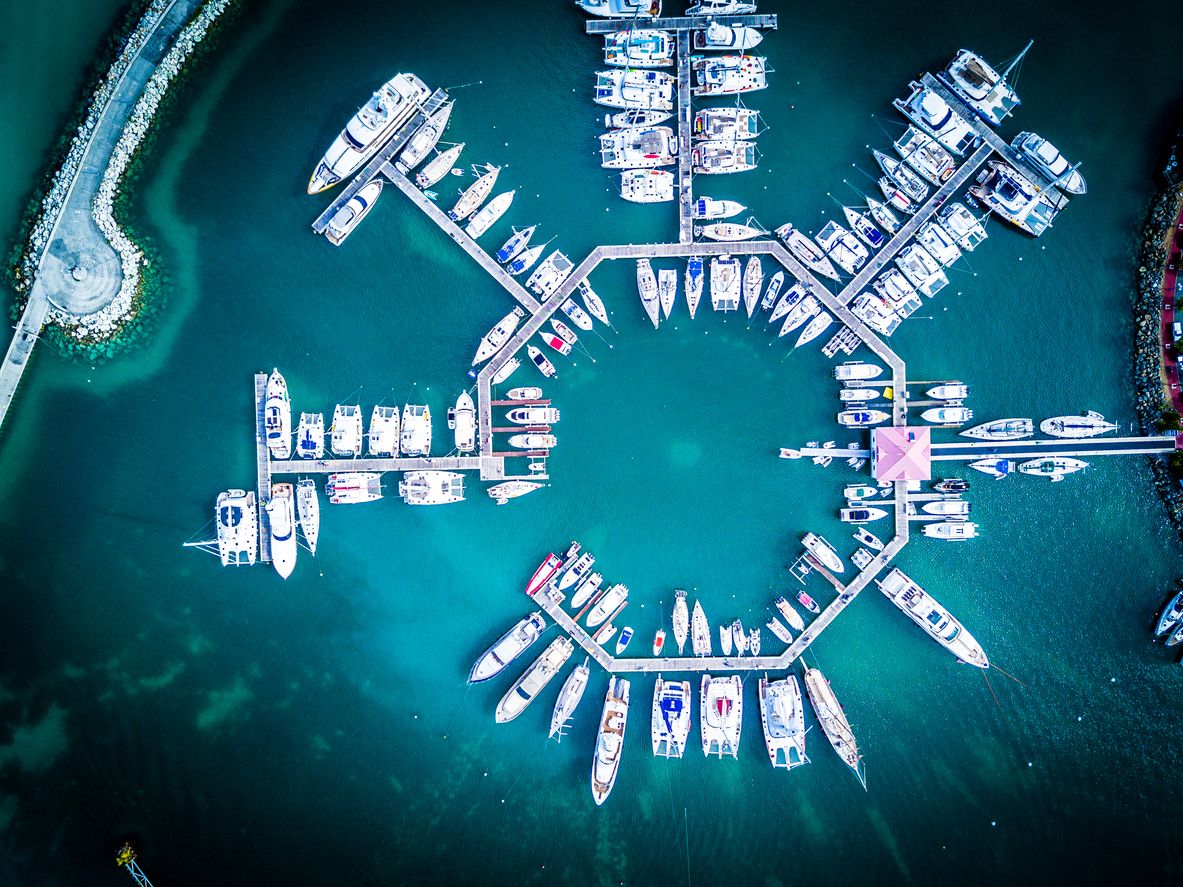
Here are a few of the most sought-after bays and islands:
- British Virgin Islands (BVI) - White Bay, Diamond Bay, Cane Garden
- American Virgin Islands - Francis Bay, Hawksnest Bay
- Anguilla - Road Bay, Crocus Bay
- St. Martin - Baie de Grand Case, Friar’s Bay
- St. Kitts and Nevis - White House Bay
- Antigua and Barbuda - Nonsuch Bay, Palmetto Point
- Guadeloupe - Baie Mahault, Deshaies, Point a Pitre
- Dominica - Prince Rupert Bay
- Martinique - Sainte Anne, Saint-Pierre, Anse Noire
- St. Lucia - Marigot Harbour, Anse des Pitons
- St. Vincent and Grenadines - island Mayreau (Windward Bay, Saline Bay) and island Carriacou (Tyrell Bay)
- Grenada - Mangrove
How much does sailing in the Caribbean cost?
The Caribbean is a popular destination not only among sailors but also among tourists and celebrities. By any chance, it is not a cheap region, but luckily not all islands are overpriced.
To rent a new catamaran for two weeks, you will pay approximately 1077 USD per person.
You will save on dinner as you can easily catch one by yourself directly from the sea. On the French islands, restaurant prices are similar to those in other European countries during the summer season.
The best sailing destinations for sailing in the Caribbean
Every single Caribbean island offers unforgettable experiences, and these are not limited to beaches only.
If you want to experience undemanding sailing combined with swimming on white sandy beaches, the Bahamas and Abacos archipelago will certainly become your favourite part. The northern Turks and Caicos, with its luxurious beach, are a popular stop in this northern region of the Caribbean. One side of the island resembles a perfect postcard, and the other side of the island is quite shabby. Such duality is common for several Caribbean islands.
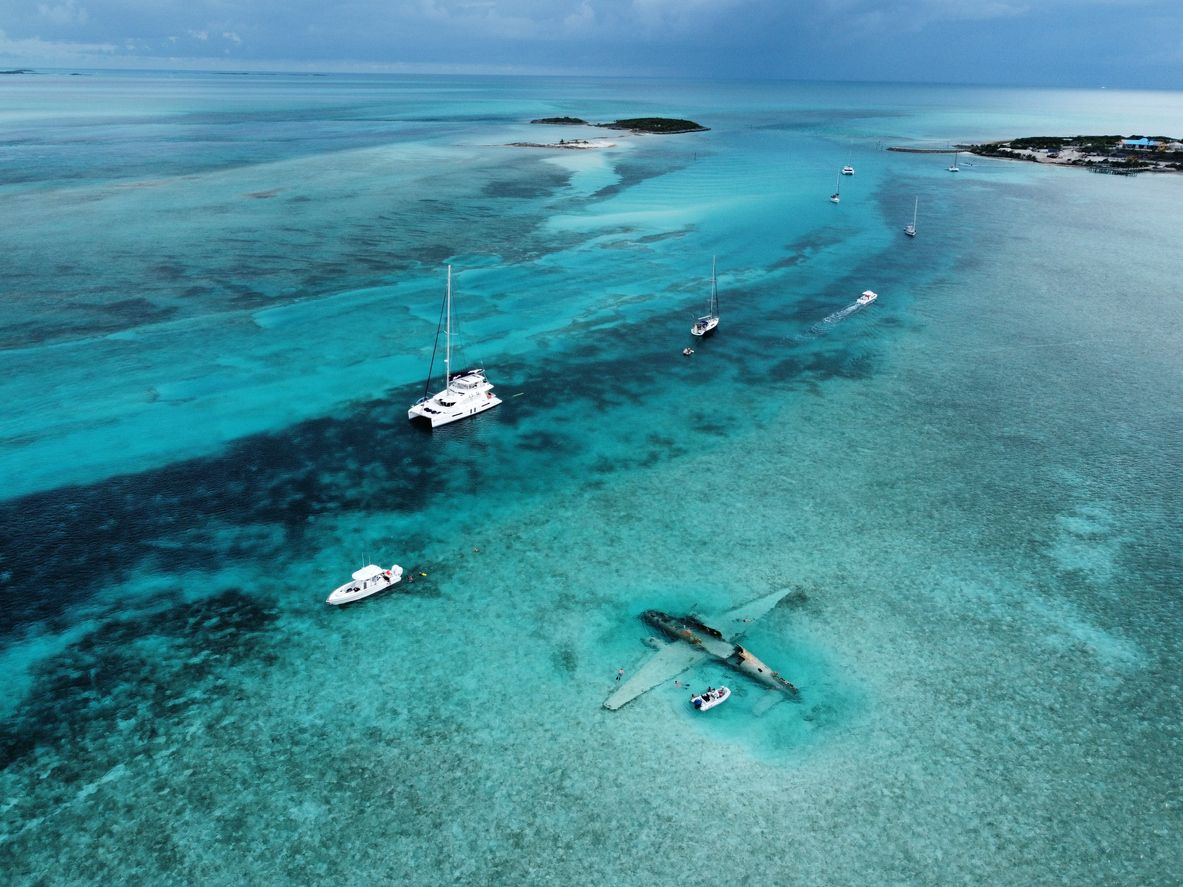
If you don’t like swinging in the waves, the British Virgin Islands (or BVI) will certainly enchant you. The rugged coastline of four main coral islands and dozens of smaller islands close to each other allows you to explore many dazzling bays during one trip. The huge coral lagoon of the BVI will especially delight snorkelers.
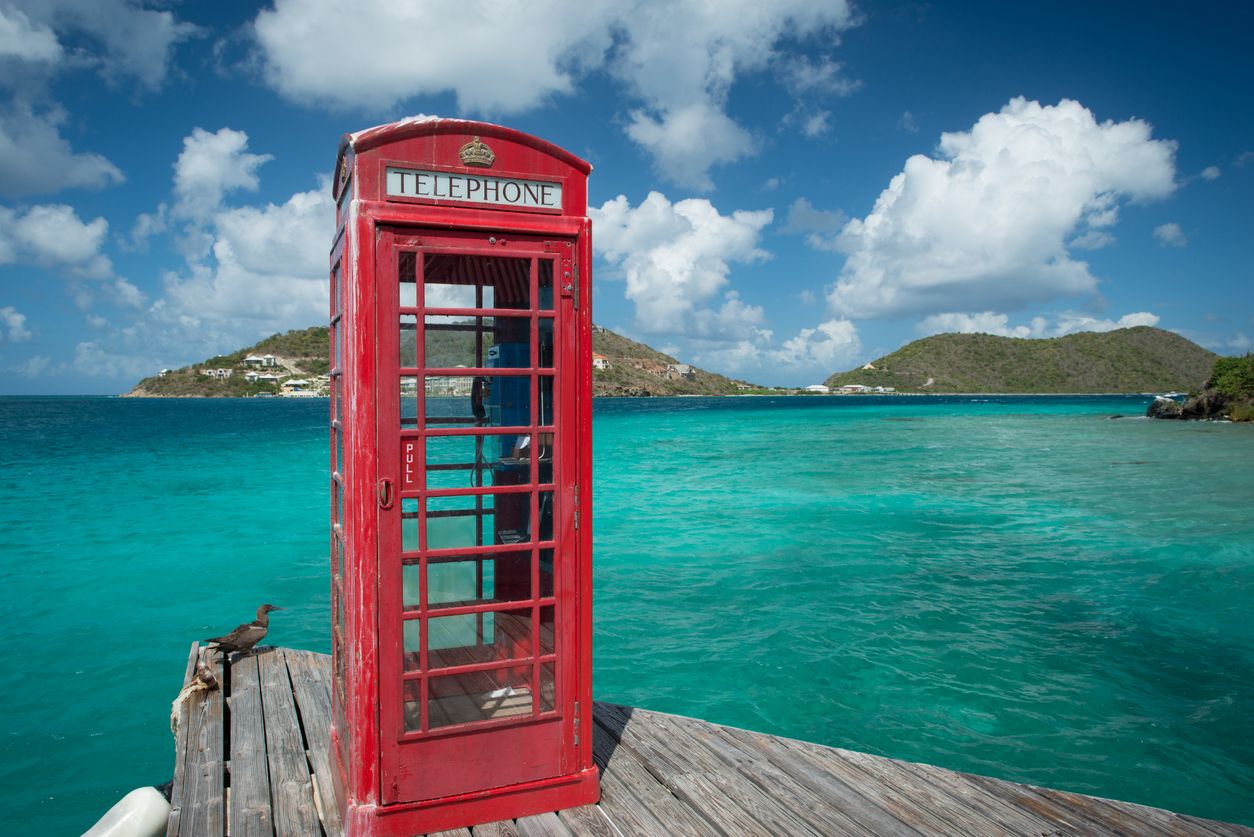
Extroverts will have a lot of fun on the island of St. Martin. This place offers many bars, discos, and excellent gastronomy. The island was hit hard by Hurricane Irma in 2017, and to this day, you can still see the consequences of this disaster. St. Martin is also world-famous thanks to Maho Beach, from which adventurous tourists take photos of planes landing dangerously close above their heads.
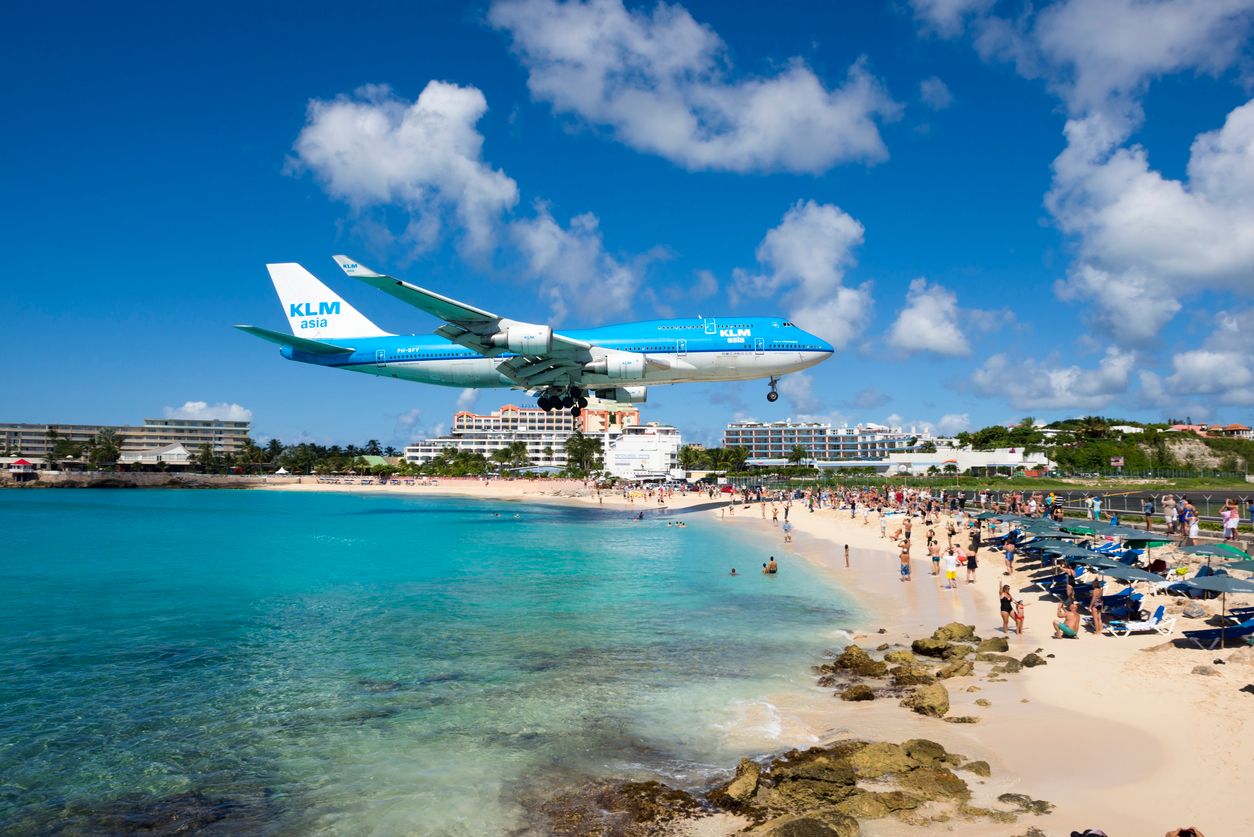
If you were to spend one whole year in the Caribbean, there are exactly 365 beaches on the island of Antigua. The romantic island of Dominica is the last place with a native Indian population from the Carib tribe, after whom the Caribbean is named. The movie Pirates of the Caribbean was filmed here. Dominica is a volcanic island without catalogue beaches, but it offers a preserved and authentic Caribbean atmosphere that the influx of tourists has not yet spoiled. The French island of Guadeloupe is known as the island of charming beaches. Still, the unique attraction is the ascent to the volcanic peak, the highest peak of the Lesser Antilles.
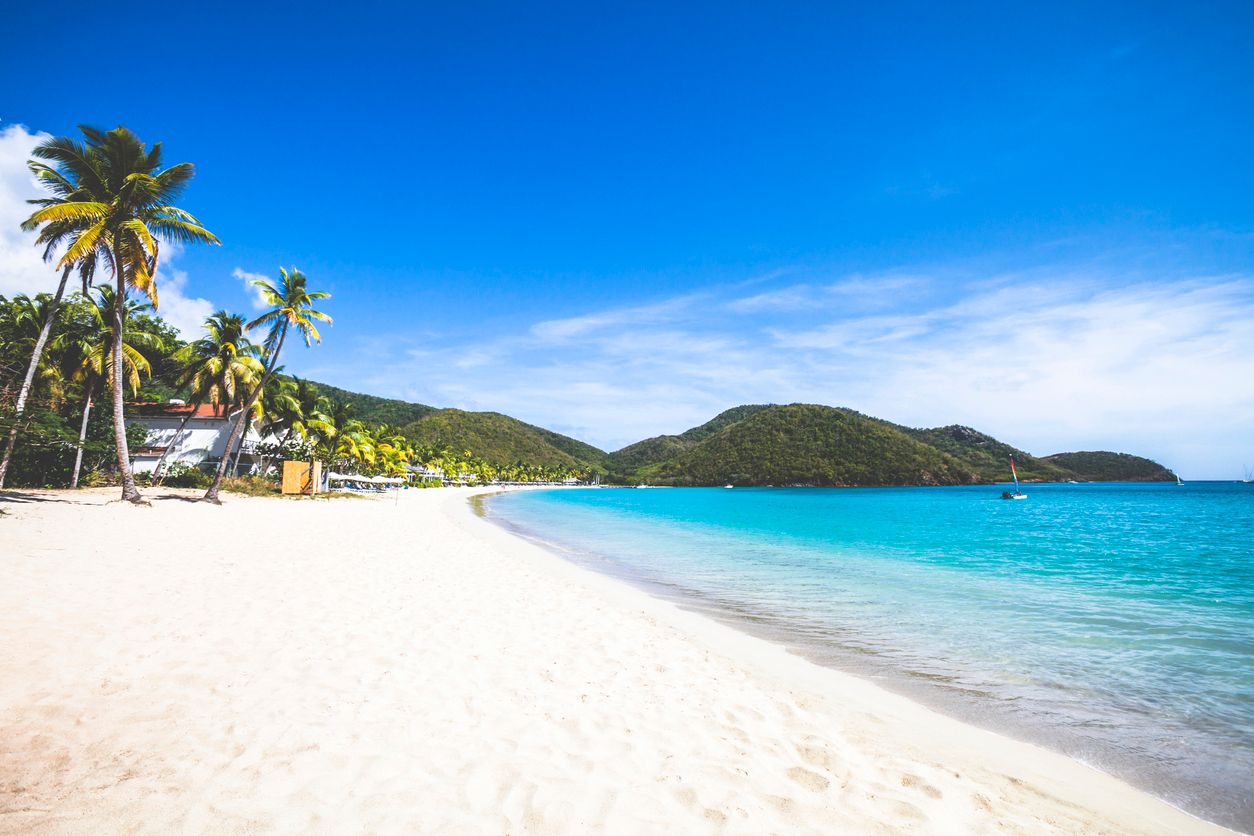
You can find a combination of French glamour and Caribbean passion on the island of Martinique. The advantage of this island is its accessibility by air, currency in euros and short sailing distances to other islands. For some, high waves and stronger wind can be a disadvantage. It is Martinique, where you can taste the most delicious and original Caribbean rum. The majestic and legendary Diamond Rock sticks out of the water to the island’s south. Martinique also boasts black sand beaches such as Anse Couleuvre.
The island of St. Lucia is of volcanic origin, and the wild nature with rainforest and waterfalls seems untouched here. Iconic are the steep rocky peaks of Pitons sticking out of the sea, which is so beautiful and unique that they belong to the UNESCO heritage. The island of Saint Lucia reminds of Seychelles due to its lush forests and birdlife. Here you can also meet the national symbol of the island - the Amazon parrot. You can enjoy excellent cocoa and local chocolate in picturesque towns and harbours. Also, on this island, you will come across beaches with black sand.

An extraordinary destination for more experienced sailors is the Grenadines and Grenada. During your cruise in the Grenadines, you may be accompanied by dolphins and even be lucky enough to spot whales. The islands of St. Vincent, Bequia, and Mayreau, with the wonderful Whistle Bay and the Tobago Cays, with their protected turtles, are worth a visit. Grenada is nicknamed the spice island because of the ubiquitous nutmeg. Chocolate lovers will not leave empty-handed on this island. Divers will gain memorable experiences too. One of the world’s most popular diving spots is an underwater park with life-size sculptures and shipwrecks.
Recommended sailing routes in the Caribbean
Even the standard two weeks of sailing are not enough to explore the Caribbean, and we believe you will have to come back for another season ;)
The most popular sailing routes lead from the north of Martinique towards Dominica, from the south of Martinique towards the Grenadines, and in the main sailing area around the BVI:
- Martinique - St. Lucia - St. Vincent and the Grenadines - Grenada
Wonderful sailing in the windward area
The disadvantage of the route is the check-in in the Grenadines on each island and the windier sailing conditions
- Martinique (EU) - Dominica (visa-free) - Guadeloupe (EU)
This part is more suitable for resistant stomachs due to the significant waves
The advantage of the route is that you do not have to deal with custom bureaucracy
- BVI (Tortola - Norman island - Beef island - Virgin Gorda - Leverick Bay - Anegada - Cane Garden Bay - Jost Van Dyke - Peter island)
The advantage is a calm and safe sailing experience and beautiful coves like in a paradise that you encounter on every “corner".
How about spending Christmas and New Year’s Eve in the rhythm of waves, salsa and reggae in the Caribbean? It doesn’t matter which specific area of the Caribbean you choose for your next sailing adventure. Remember that the Caribbean should be explored slowly and several times. You can start by choosing a suitable catamaran on the Boataround website.
